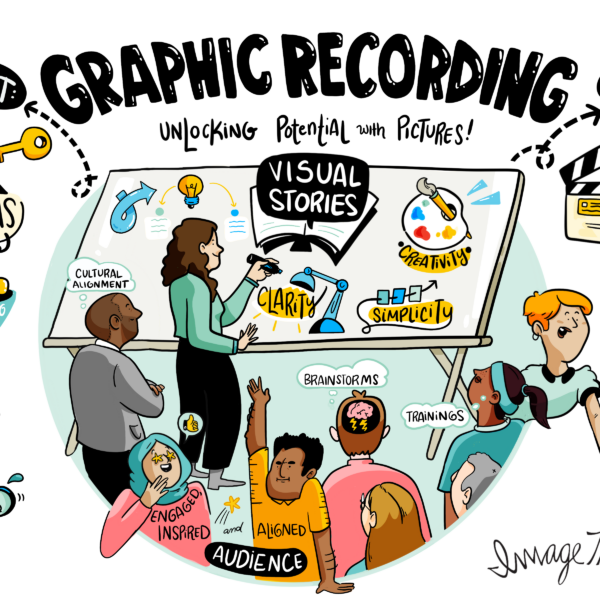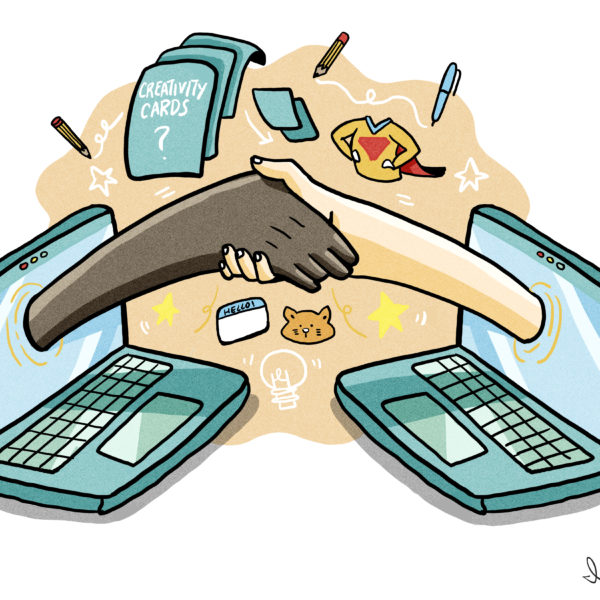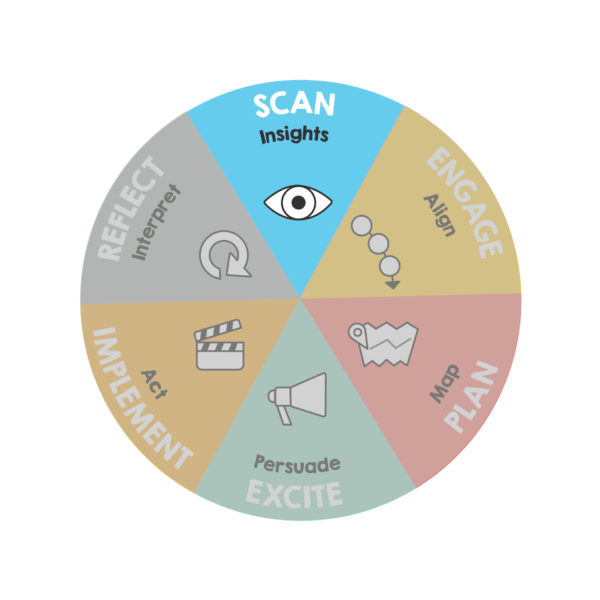What should you have for breakfast today?
It’s a rather simple question that most of the time will be answered instinctively. While variables like mood, time, ingredients, place, and money impact the decision, they are all innate elements we choose not to notice. We make the decision to eat eggs and toast at home quickly and move on with our day.
It’s the minor decisions like what to eat for breakfast, or what to wear that make up the nearly 2,000 decisions we make every waking hour. But at some point in time, we are each faced with much larger challenges – decisions that require more thought, more energy, more time, and perhaps result in greater consequences if made incorrectly.
Business leaders know that the success (or failure) of a company is reliant on effective decision-making. And, with research from Gartner Inc. revealing that 65% of executives have to make more complex decisions today than they did 2 years ago, the pressure to make better, justified decisions has significantly increased.
So, what can be done to ease the decision-making process for leaders, team members, and board members? What can help improve the outcomes of the business decisions we make? We’re glad you asked.
In this blog, you’ll learn what impacts our ability to make effective choices, and how to aid decision-makers with visual input to enable better, more informed decisions. You’ll experience some of the creative exercises we use with our largest clients to assist their decision-making process and generate better outcomes for their business. We encourage you to read on, but the decision is yours.
What impacts our ability to make effective decisions?
Making grand-scale decisions is never an easy feat. Especially when there are elements working against you. According to Harvard Business Review, there are six items that can impact our ability to make sound decisions. Those items are as follows:
- Decision fatigue – our ability to perform mental tasks and make decisions wears thin when its repeatedly exerted.
- Distractions – technology allows for constant information and communication which can cause our focus and decision-making skills to dwindle.
- Lack of input – team contributions (or lack thereof) can lead to poorly made decisions.
- Multi-tasking – when we focus on two cognitive tasks at the same time, our ability to make effective decisions suffers by up to 40%.
- Emotions – anger, frustration, happiness, and excitement are all emotions that can hinder our ability to make good decisions.
- Analysis paralysis – the more information we have to consider, the more likely we are to overanalyze the situation at hand. Information overload can stall the decision-making process.
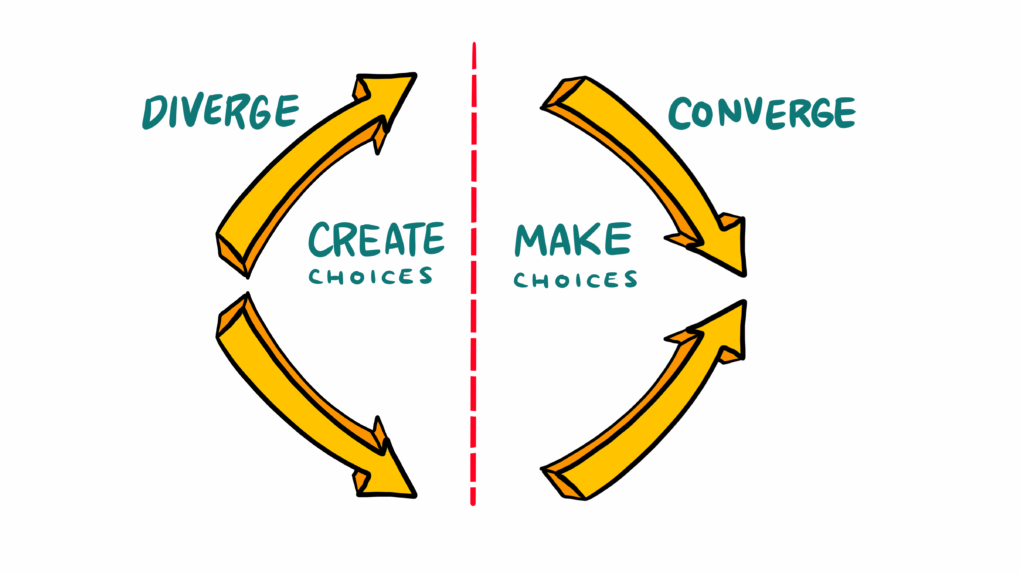
Being aware of these items and how they can impact your, or your decision-makers’ ability to make an effective decision enables better decision-making. But, it also highlights how visual input in decision-making can prompt better outcomes by eliminating these factors. Visual strategy and practices allow teams and decision-makers to break down each step, collect, sort through, and focus on the pertinent information, determine alternatives, and select the best course of action with ease. With visual input, items are better understood, the process is made more efficient, and the outcomes are greater.
Taking the complexity out of decision-making
Anyone who’s attended college is familiar with the difficulties of onboarding – from selecting courses, to acquiring loans, housing, and more. For first-in-family college students, without a support network of people who’ve been there before, the process can be even more daunting. That’s why Jackson State University sought out the help of the ImageThink team, searching for a way to present higher education as an achievable goal earlier in student academic careers.
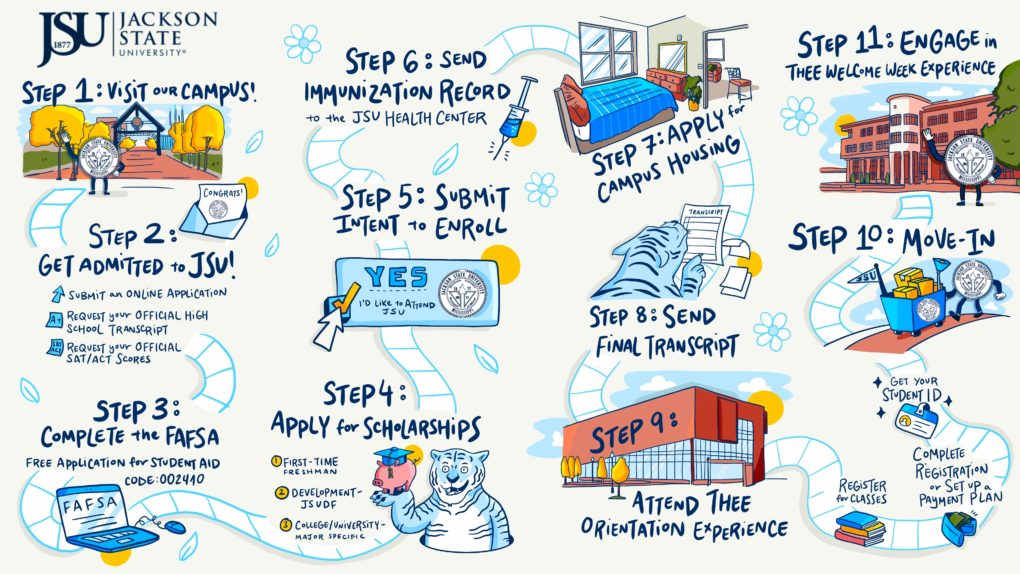
What better way to simplify the complexity of the onboarding process than with strategic visuals? The ImageThink team got right to work, collaborating with the JSU administrators to create a set of energetic branded visuals. These would act as a checklist for first-in-family or ESL students unfamiliar with the US higher education system.
The final product consisted of approachable yet comprehensive visual summaries about the admissions, orientation, and financial aid processes at JSU. Now, Jackson State University uses them as a resource to empower students to tackle the university onboarding process with confidence and dignity. For us, it serves as another great example of the impact of mapping out journeys and using visuals to simplify complex processes.
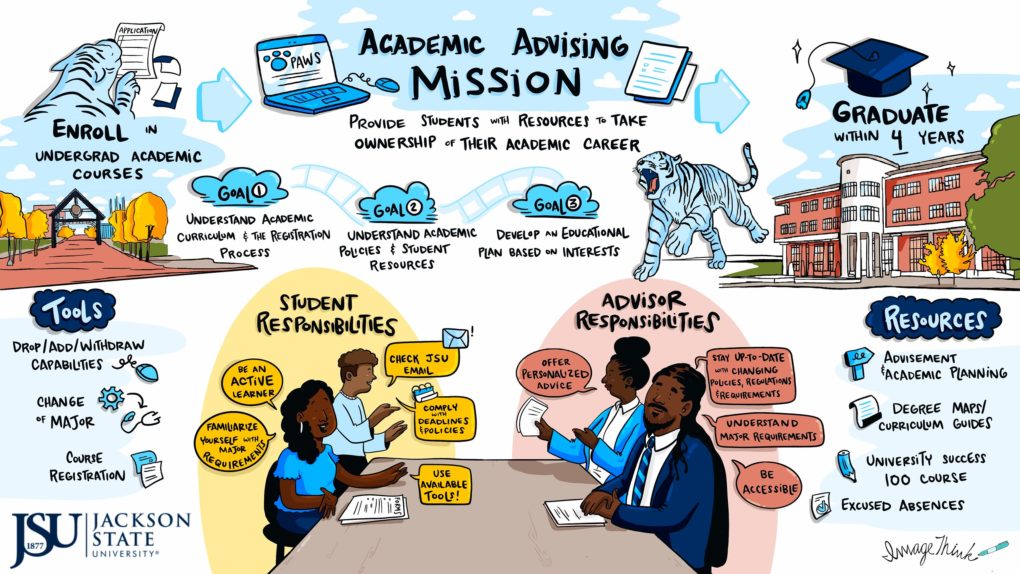
When it comes to difficult decisions like those associated with beginning an individual’s college career, illustrated options, processes and resources can make an enormous difference in setting a decision-maker up for success. In more recent years, customers, students, and patients, have become more keen on the power they hold as decision-makers. Thus, engaging your audience with clear, visual communication shows them that you care about their decision, and want to provide them with the information they need to make the best choice for themselves.
The visual decision maker’s toolkit
So why is ImageThink writing about how people make decisions?
As a visual strategy firm, its typical for us to encourage the use of visual practices in our work. Thinking and working visually is what enables our clients to map out and assess crucial decisions from entirely new angles.
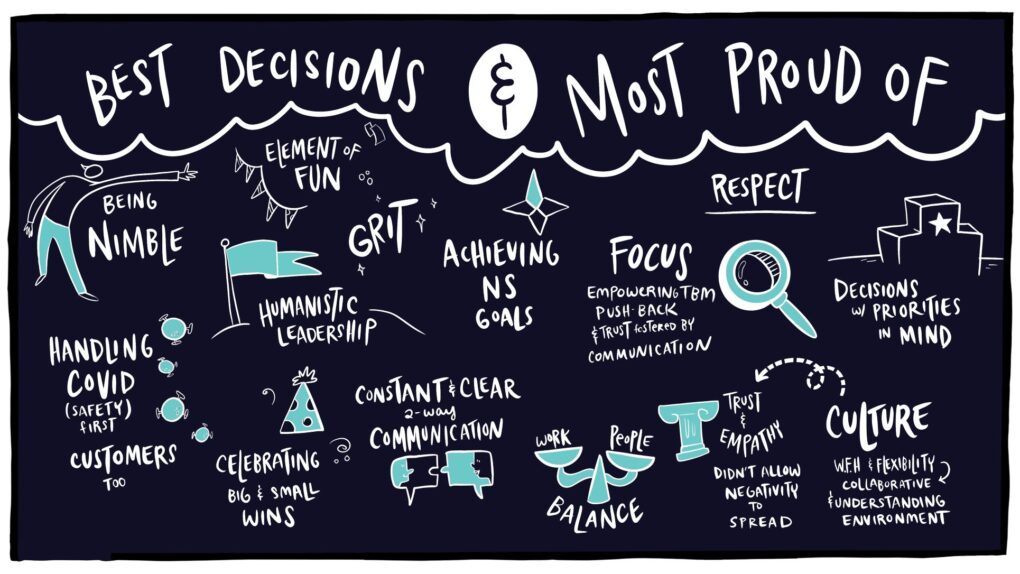
With illustrated, organized data and key findings, our clients are provided clarity on processes and steps, and equipped with the methodology to make better, more informed business decisions. Below are some of the ways we help our clients incorporate visual input into their decision-making processes.
Rose, Bud, and Thorn Exercise
The Rose, Bud, and Thorn exercise is a low-lift way to visualize decisions. An ImageThink rose placed in the center, and the board is divided into three components (rose, bud, thorn) – achievements, developments, and challenges.
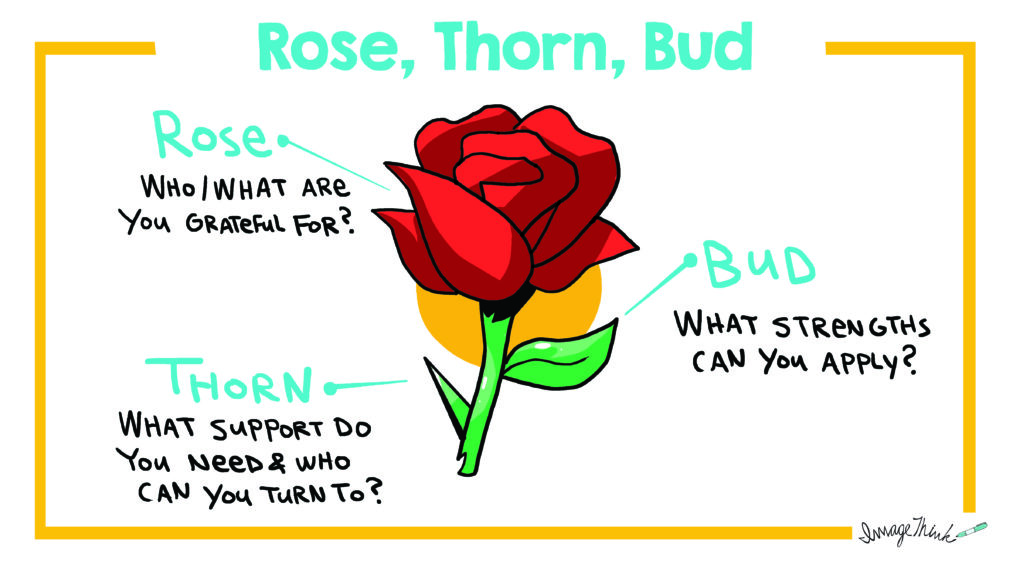
For an important team-wide decision, the rose section may involve examining past decisions that have gone successfully. In this section, you may include items that are working for you or your company, or that your team is proud of.
The bud section may include aspects of the current project or decision that your team is excited about. Items that reveal new opportunities, solve organizational headaches, or capitalize on existing strengths have a place here.
The final section – the rose’s thorn – helps identify pain points, or barriers to implementing the decision. Your team should consider elements of support such as resources, or who to turn to if assistance is needed.
Magic of Constraints
As part of our #LetsGetVisual series, Magic of Constraints draws on our ability to brainstorm solutions and deploy creative problem solving in the face of real-world limitations.
Decisions like which three books you would bring if stranded on an island demonstrate constraints and how they push creative boundaries. But these constraints are metaphorical and minor in comparison to items like budget allocation, selecting a candidate for a role, or determining contract elements for a collaborative, profitable partnership.
With this exercise, you are tasked with creating a 40-hour workweek model to increase productivity. Time and budget constraints prompt you to use creative problem solving in order to discover feasible outcomes. Think of this exercise as conditioning for better decision-making. The more you practice working with constraints, the less stressed you will be when tasked with making a decision, and the more prepared you will be when faced with real constraints in the decision-making process.
Important decisions should not be made lightly. Whether you’re looking to improve business decision-making or provide customers, patients, or students with the necessary visual input for informed decisions, look no further.
Our ImageThink team is tenured in graphic facilitating decision-making across various industries, and in meetings large and small. We’ve used visual strategy to eliminate the complexity of million-dollar business problems, create better relationships between client and customer, and guide clients toward success. If you want to experience our work firsthand, and make better decisions, give us a call today.
